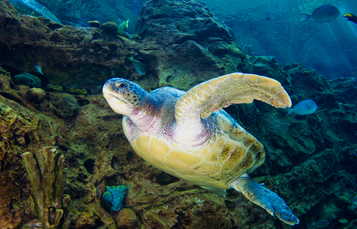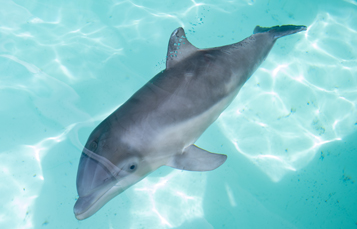Protecting Marine Animals through Purpose-Driven Partnerships
March 15, 2021
2020 was certainly an unprecedented year for everyone, including the team members and animals at SeaWorld. Despite all the challenges and obstacles 2020 presented, SeaWorld was still able to reach a very important, if not sobering milestone. To date, we have now rescued more than 38,000 wild animals that were ill, injured or orphaned.
While much of what we do and enjoy in life as humans was postponed during 2020, what didn’t stop during the pandemic was the need to perform critical animal rescue and conservation work – two pillars of our mission at SeaWorld. Amidst a global pandemic we also faced exceptional threats from natural weather events which significantly impacted animal habitats and ecosystems. This caused 2020 to be far from a typical rescue and response year for us. While it’s not uncommon for our teams to respond to dolphins displaced by hurricanes, 2020 saw us responding to three different groups of dolphins displaced by three separate storms, all in the same region of the Gulf of Mexico; possible evidence of the growing impact climate change can have on the marine life we respond to.
In October, when the Pacific Marine Mammal Center in Laguna Beach, a colleague and partner of ours who last year alone responded to over 80 animals, reached out to us to help them evacuate the center’s animals as wildfires raged nearby, we stepped in to care for the center’s seven sea lions, a harbor seal and an elephant seal, and then safely returned them once the fires had subsided.
It’s important to remember, the rescue work we do at SeaWorld is just one component of our overall purpose. We also perform conservation research work to help improve the management of wild populations of animals, for instance the research we published in December that provides a critical set of standards to assess and diagnose the health of wild dolphin populations.
In addition, we invest in educating and inspiring younger generations both inside and outside of our parks to protect marine life and the oceans these animals call home. And, since its inception, the SeaWorld Conservation Fund has awarded well over $18 million in conservation grants to over 1,200 organizations. For the last year, the Fund has been keenly focused on efforts to protect the critically endangered North Atlantic Right Whale.
I’m proud of the work our dedicated team members have been able to accomplish this year. Despite the extraordinary pressures faced by a global pandemic, they were unwavering in fulfilling SeaWorld’s mission. And as you see above, a lot of it has been done in collaboration with the incredible partners we have, which include the world’s leading animal welfare centers, specialists, veterinarians, and conservation scientists. So, as we look ahead, we want to use this platform to also shed a light on some of the significant work they are doing in the animal care and conservation space.
To kick it off, this month is Dolphin Awareness Month. You’ll be hearing from our good friends and partners at Hubbs SeaWorld Research Institute about their recent research highlights around dolphins that help us give us a deeper understanding of why cetaceans, like the bottlenose dolphin, “strand” – a leading cause that threatens them – and ways to prevent it and rescue them.
In the months to come, we look forward to sharing more about our cooperative work to further animal care, conservation science, and public education about the ocean and marine animals; highlighting the important role accredited zoos and aquariums play in animal conservation. Together, we can and will have a positive impact on our oceans and their animals.


.ashx?version=1_202404022246&h=468&w=766&la=en&hash=8DE65BD619660B17C9F60D61E7DCD1D3C7809F39)